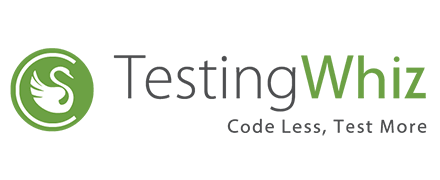API Testing Tools: Application Programming Interfaces (APIs) are an essential part of modern software development, allowing applications to communicate with each other and share data seamlessly. Testing APIs is crucial to ensure their functionality, performance, and security. API testing tools are designed to automate the testing process and provide accurate results, thereby increasing the efficiency and reliability of software development.
With the increasing demand for APIs, numerous API testing tools have emerged, each with unique features and capabilities. In this article, we will explore the importance of API testing and highlight some of the most popular API testing tools available today.
These API testing tools come in various formats, including open-source and commercial, and range from simple command-line tools to complex testing suites. Open-source API testing tools, in particular, have gained popularity in recent years due to their accessibility, flexibility, and cost-effectiveness.
These tools offer developers and testers a range of benefits, including the ability to customize the tool to suit their specific needs and the opportunity to contribute to developing the tool’s codebase. However, commercial API testing tools have advantages, such as providing more comprehensive test coverage and technical support. Ultimately, the choice of API testing tool will depend on the project’s specific needs, budget, and level of expertise of the development team.
In the following sections, we will explore some of the most popular API testing tools available today and their features to help you make an informed decision.
API Testing Tools List
Several API testing tools are available to assist developers in their work. They vary in terms of their features, ease of use, and even price. However, some are more comprehensive, while others provide greater value. Here’s a look at how three tools stack against each other and what you can expect from them.
1. HP QTP (UFT)

HP’s Unified Functional Testing is a great tool for testing all the APIs in your application. As API testing doesn’t require the presentation layer, UFT can directly access the application’s business layer, test the APIs’ requests and responses, and validate them.
Along with the business layer, UFT can also be used to test the database layer, thus helping to create an all-around testing solution for the underlying application components. That’s not all; using its test conversion tool, you can convert existing API tests (ideally soapUI) into UFT API tests.
2. HttpMaster

HttpMaster is a great tool that allows you to automate web applications and helps you automate API testing. Using this tool, you can chain different requests for REST API calls and use data validations to verify responses.
You can choose from the standard HTTP verbs and mold the tool according to the needs and requirements of your test APIs. It has elegant data upload support, which allows you to post various content types, while the response data viewers increase the readability of XML, JSON, HTML, and CSS responses.
3. vREST

This tool provides an online solution for automated testing of your APIs, mocking them, and automated recording and creating a specification for HTTP APIs & REST APIs. Using it, you can quickly test different APIs without excessive technical effort.
You can even generate complete documentation of your API specifications using vREST. The API mocking feature, along with Mock Server, allows developers to mock existing APIs and start development at a quicker pace. At the same time, the API mocking can be used by testers to validate multiple request responses quicker.
4. SOAP UI
website: http://www.soapui.org/

SOAP UI by Smart Bear is a cross-platform, open-source functional testing tool that allows you to test your application’s underlying APIs. This tool automatically fabricates test cases from the API request and allows you to write complex request validation scripts using Groovy. That’s not all. You can even organize your test cases in different test suites, manage requirements, and perform analysis for test coverage. You can even mock APIs and create a report after test execution.
5. Parasoft

Parasoft provides you with an interface to create complex scenarios and test your application’s APIs, databases, and mainframes in one go. This tool allows you to create easily maintainable and extendable tests with 100% coverage. That’s not all, you can even create scripts without writing a single line of code. You can create sophisticated validation checks and run them continuously. It has support for all major platforms, protocols, and technologies. It is easy to install and work with and simplifies your approach towards API testing.
6. TestingWhiz

Using TestingWhiz, you can automate your API tests without writing a single line of code. It allows you to mock APIs and test REST & SOAP web services over HTTP or FTP. Apart from API testing using Testing Whiz, you can perform your application’s functional, UI, and database testing. Thus, you can bring all your tests under one roof using a single tool. It can be integrated with different defect tracking tools, like JIRA, Mantis, etc., to log defects automatically. After every test suite execution, it can be configured to send test reports and execution summaries over mail.
7. SOAPSonar

SOAPSonar is a robust tool that allows you to test your application using different testing methodologies thoroughly. Using this tool, you can test the different web services used in your application. Be it HTML, XML, SOAP, REST, or JSON, SOAPSonar can cover it. Once you create web service-specific test scripts and group them in different suites, you can utilize SOPAPSonar’s vibrant reporting feature to publish reports in different formats. It can also be integrated with HP’s Quality Centre.
8. Runscope

Using Runscope, you can verify whether your application APIs are sending a correct response. You can even monitor the performance of these responses. Each test execution creates a rich test report that properly describes the reason for each test failure. To ensure fast reporting, the tool can be integrated with HipChat, Webhooks, Slack, or PagerDuty to instantly notify team members if any API goes down or sends a wrong response. The tool also assists you in creating complex test data for complex requests. Using Runscope, you can even test APIs and backend services of mobile apps.
9. Rapise

Rapise is a powerful automation tool that can automate REST/ SOAP web services. It is built upon an open & flexible architecture and can be used for functional testing of web applications. The tool uses HTTP methods to test API responses for various requests. You can configure test reporting using Rapise and execute multiple tests in parallel.
Conclusion:
Each testing team has unique requirements, so selecting an API testing tool or combination of tools that align with those needs is critical. While identifying a tool that can fulfill all needs may be challenging, it is crucial to integrate a toolset that meets your organization’s needs and enables revenue growth. Therefore, the key approach is to evaluate different API testing tools thoroughly and choose the one that best suits your team’s requirements.
